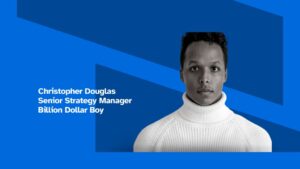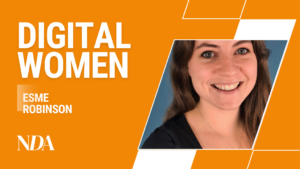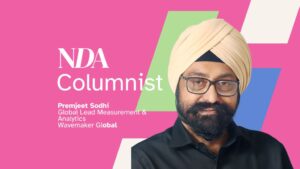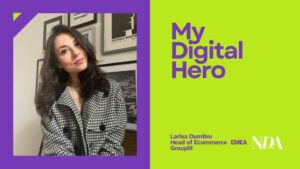Silos, in agencies or brands, have always been the enemy of digital effectiveness. Never is this more so than when it comes to the gulf between insight and creative. Teads has kicked off an initiative to help drive change in the relationship between creative and insights teams. Find out how you can be part of this below.
By Caroline Hugonenc, Global VP Research & Insights, Teads
It’s no secret that creative people and insights people are not best friends, but I realized it only recently at an event in Spain where I was presenting some work we did on testing and optimizing creatives.
The moderator asked a Creative Director sitting on the panel what he thought about it. He gave me a very dark and intimidating look and started to answer. Even though I can’t understand Spanish, I really felt how much he hated it!
It looks like we might have a relationship issue here that we need to fix between the left and the right side of the advertising brain. How can evidence-based creativity ever happen if creative teams and insights teams don’t talk to each other?
I have seen first-hand how creative and research people tend to work in silos and fail to effectively communicate with one another. But I have also seen that once we build bridges between teams, share processes, objectives and languages we see spectacular results that benefit the creative output, and ultimately the client.
My theory is that one of the root causes of the situation comes down to the toolbox that creative teams rely on — it’s both outdated and limited. In today’s world, data and AI can empower both research and creative like never before.
Let’s use pre-testing as one example. Pre-testing has a bad reputation among creatives because it can kill a bold campaign idea that underperforms compared to past benchmarks. The model lacks flexibility and provides few insights on “the why” and “the how” to optimize a creative. Today we have the ability to move beyond this outdated model and effectively complement creative evaluation with AB testing to assess performance in real life and in (near) real time.
Technology like visual AI and facial coding means we can also conduct research faster, cheaper and with better visualization of the results, translating to more actionable insights.
At Teads, we have combined these technologies to build a pre-testing solution called The Creative Lab. It is based on a whole brain approach, as defined by the American creativity researcher Ned Hermann. We have teams from across the business all of whom have very different cognitive profiles working well together. Our Ad Ops team operates AB testing, our intelligence team drives the analytic thinking and the Teads Studio team is the creative expert. This allows us to not only deliver diagnostics on ad performance, but also to draw recommendations of optimizations that apply to the campaign.
Collaboration between the intelligence and studio team didn’t come without challenges and clashes. It is far more comfortable to stay in our respective lanes, but we learned with time how to function and embrace our differences.
So far, we have tested more than 600 creatives on digital devices and through this testing, we’ve demonstrated that we are able to improve emotional engagement by 30% through optimisations. Such success is only possible by leveraging the diverse range of talent we have at large organizations.
None of us if as smart as all of us- Ken Blanchard
Those results are a testament to the value of a data-driven approach to creativity. It is also important to recognize how cognitive diversity can help to achieve better outcomes by mixing differing expertise and ways of thinking.
Beyond creative testing, data capabilities are also transforming our ability to learn about consumers and apply this knowledge to creative thinking. For example, using our DMP (Data Management Platform), we can profile any Oracle segment for socio demographics, devices and interest based on the type of content users consume. Using this information about audiences, we now have the tools to help creative agencies deliver even better concepts for their client’s brands.
This makes me very hopeful for a future where we can build a constructive and collaborative process in lockstep with creative people.
For brands, the benefits of having the left side and right side of their advertising brain connected are obvious: better informed strategy, and creative optimized toward a KPI before and during a campaign leads to better results.
At Teads, we felt a responsibility in this re-booting process, and are taking steps to act on it. But we need you to help by taking part in a survey that will help us to better gauge where the industry is at large.
Whether you have a love-hate, love-love, hate-hate or even a fairly mellow relationship with your insights or creative counterparts, we want to hear from you. Please fill out the survey below and let us know what you think about your left or right brained counterpart teams so that we can help better analyze and ultimately improve the relationship between creative and insights people.
If you work on the creative side, please click here, on the insights side, here.
In a second phase, we will organize meet up in the big cities globally to share the best examples of collaboration between creative and insights teams as well as innovation that is coming in on the data or insights front.
If you are interested in contributing or participating, let us know.












